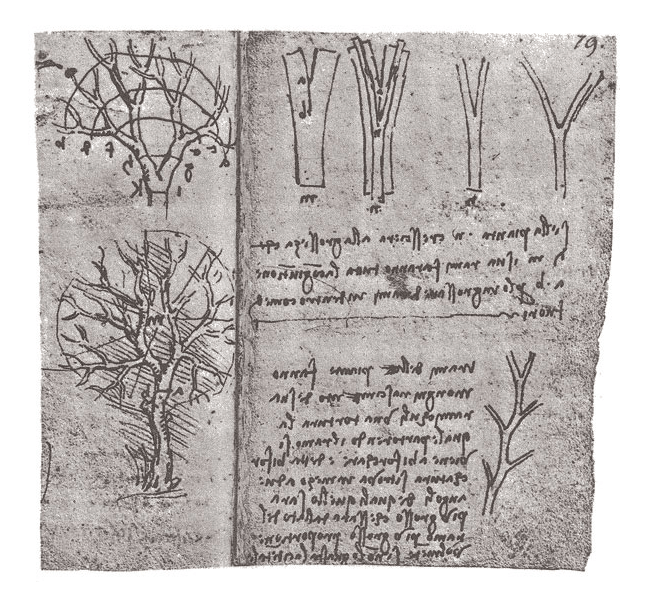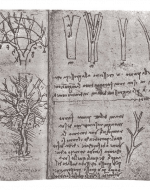Created by Marina Mehling on Mon, 01/27/2020 - 23:25
Description:
This schematic from Leonardo da Vinci's notebook illustrates his coined "Rule of Trees" (Eloy 25) which suggests that if you fold all the branches of a tree upward, they will combine to create a continuation of the trunk with the same surface area. Modern publications have proven the validity of da Vinci's rule, even though da Vinci did not collect experiemental data (that is known of) to formulate this hypothesis. The bottom right sketch elucidates da Vinci's thoughts on tree branch directionality and size relative to their parent branch (83).
Leonardo da Vinci's interest in tree anatomy is unusal for his time period. Trees and other scenery were often not featured in art throughout the 1400's and early 1500's. The drawings and notes shown in this image contribute to da Vinci's general interest in utilizing scientific properties and relationships in paintings to make them look multidimensional and realistic.
Sources
Eloy, Christophe. “Leonardo’s Rule, Self-Similarity, and Wind-Induced Stresses in Trees.” Physical Review Letters, vol. 107, no. 25, Dec. 2011, doi:10.1103/physrevlett.107.258101.
Leonardo da Vinci's Notebook. The British Library MS Viewer, 83. www.bl.uk/manuscripts/Viewer.aspx?ref=arundel_ms_263_f001r.
Image is a scan from da Vinci's notebooks (83).


